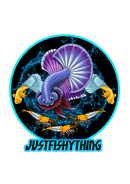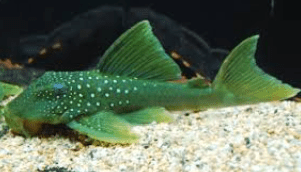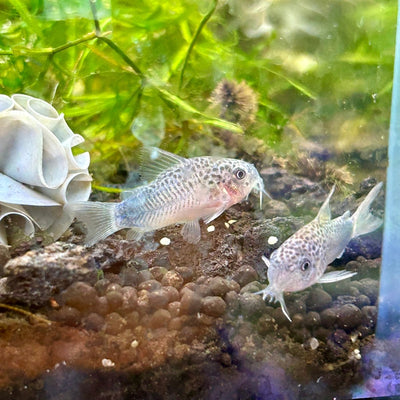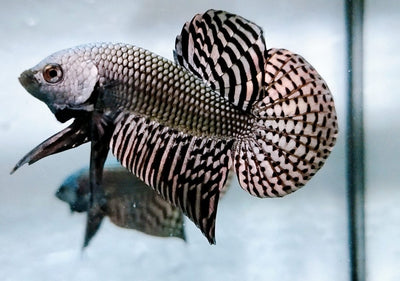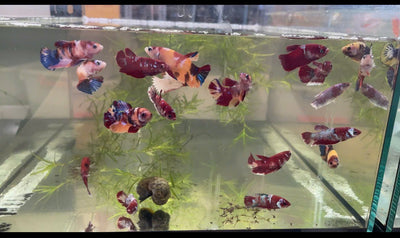"Salt" is known as a Chloride or NaCl solution, contains many potential effects in fish farming. It is truly effective in destroying, releasing biological materials and especially minimizing Stress of fish due to imbalance (water balance) during transportation, and acute stage of methemoglobinemia (Brown blood disease due to NO2 nitrite poisoning).
After years of testing with hundreds of fish, we have witnessed the true power of salt. Sodium chloride (NaCl) is one of the best “medicines” on the market that is effective against bacteria, fungi and external parasites. We love it because it's cheap, available at all stores, never expires, and can be easily used in low to high concentrations.
However, another downside is that salt cannot be used with most live plants and snails and it is easy to accidentally overdose on salt, which can kill everything (not just bacteria) in the aquarium. your soft drink. However, with accurate measurements and careful use, both new and experienced fish keepers can benefit from this highly effective remedy.
-
What type of salt should I use for aquariums?
Salt specialized for freshwater aquariums, also known as "tonic salt", is different from table salt and the salts you often use in the kitchen. Note that, do not add salt to any of your aquariums or aquariums. Aquarium salt is essentially salt made from evaporated seawater, it is specifically designed for use in freshwater aquariums and does not contain additives such as iodine or calcium silicate anti-caking agents. or also known by the familiar term GRAIN SALT.
Absolutely do not use iodized salt for your aquarium. -
Some instructions for using salt to treat other diseases.
Diseases Dosage grams/ liter Time Used to treat diseases caused by Flavobacterium (fin rot, mouth fungus), and diseases caused by Saprolegnia 20-30 Take a quick bath for 10 - 30 minutes, depending on the fish's tolerance Restores blood salt concentration, improves fish condition;
In tanks where fish are treated (fasted) before transport:
In the tank, fish are processed and sized;
Nursing fingerlings after transportation;
Live fish in pet store3-6 Unlimited Prevent Saprolegnia fungus and external infections during and after operations 3-6 Unlimited Controls trematodes and some parasitic diseases on the skin. gill. 50 Soak quickly (30 seconds to 3 minutes). Used in cases of serious infection in difficult to treat areas. Controls trematodes and some parasitic diseases on the skin. gilll. 20-30 Bathing is quick (10 - 30 minutes), and needs to be repeated 2 - 3 times for effective control on some parasite species. Controls trematodes and some parasitic diseases on the skin. gilll. 10-15 Bathe for 6 - 12 hours, then rinse by running water slowly, repeat bathing 2 - 3 times Prevent damage to broodstock (osmotic pressure imbalance) during captivity or natural spawning. 5 - 6, with additional Calcium Dihydrate 80g/m3 Not determined
Fish are raised in water containing salt and Calcium Dihydrate
After spawning, fish need to be kept at least overnight in this water before moving them to another pond the next day.Shipping 5-8 During transportation Used in circulatory and biofloc systems to prevent bacterial gill diseases, fin rot, and fungal infections. Reduces the risk of nitrite poisoning 3 During production period Controls fungal diseases 20-30 Take a quick shower for 10 - 15 minutes
-
How long should salt treatment last?
- Leave the salt in the aquarium until the fish look healthy and then remove the salt by changing the water. At the end of treatment, do a 30% water change without adding salt and then wait a week to monitor. If the disease does not recur, do another 30% water change without adding salt and wait another week
- If the disease recurs, return the dose to the original salt concentration and add a little more salt to increase the concentration of the solution. The initial salt concentration was probably not strong enough to completely destroy the lesions, or the fish did not spend enough time in the salt solution to dehydrate all the pathogens.
- Must use appropriate salt concentration, usage time and adaptation must depend on each type of fish.

